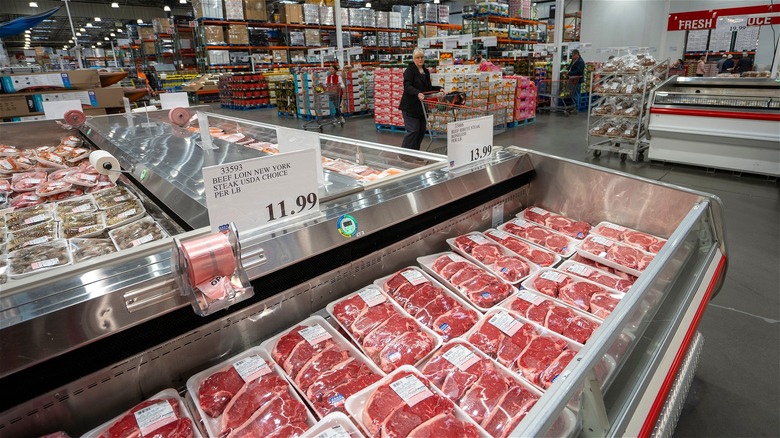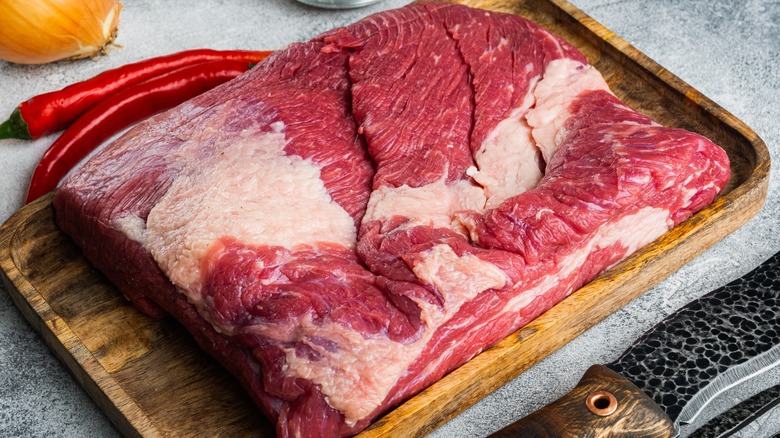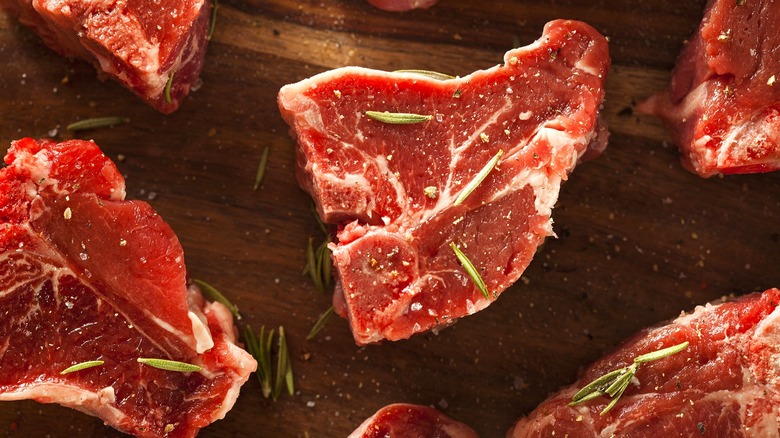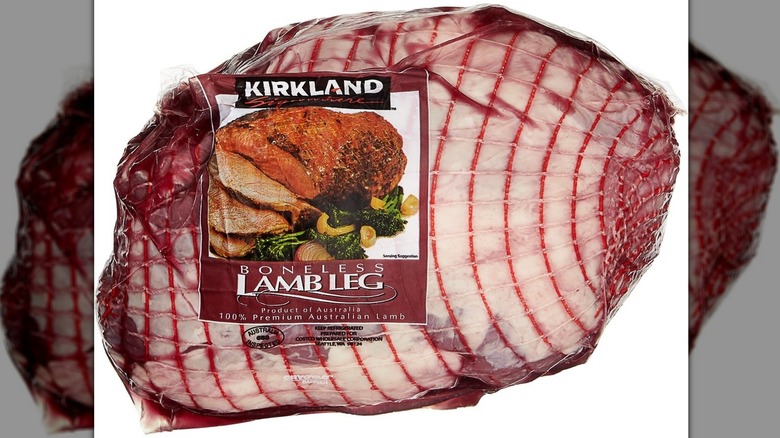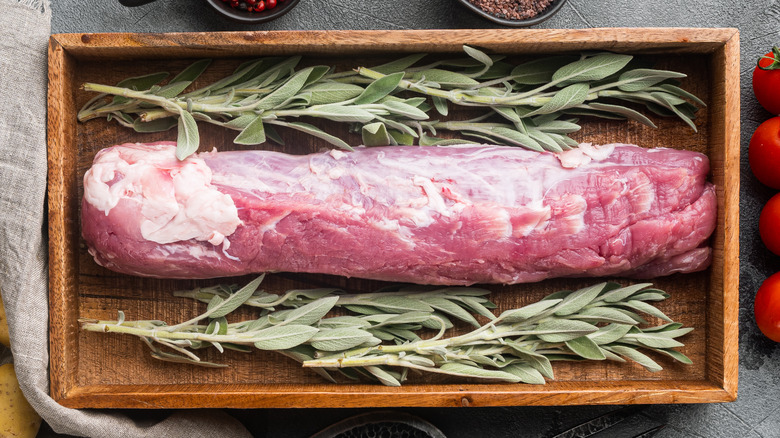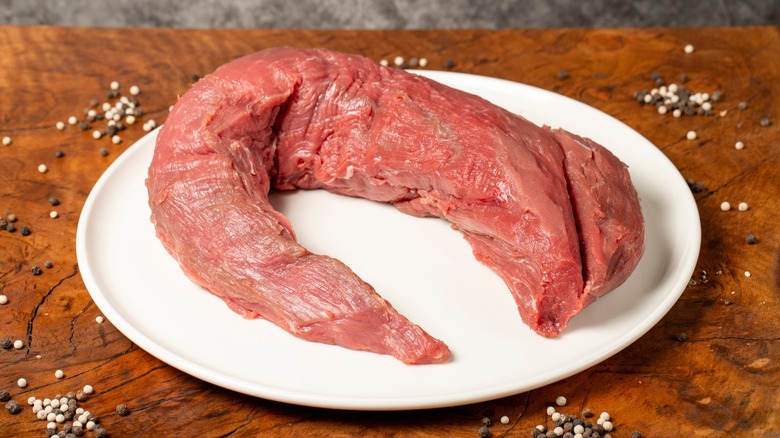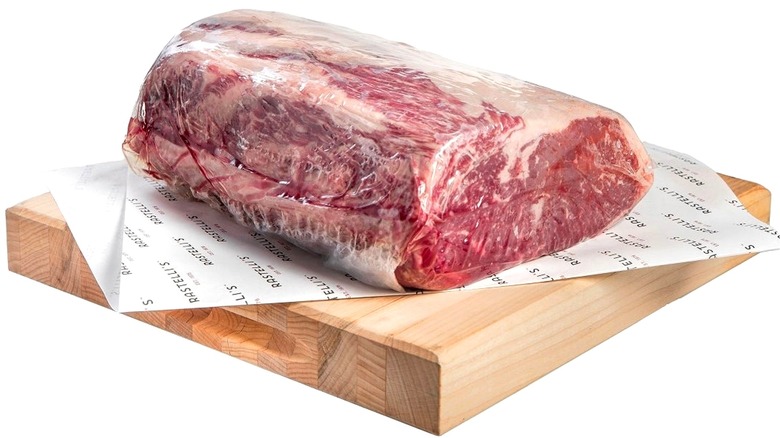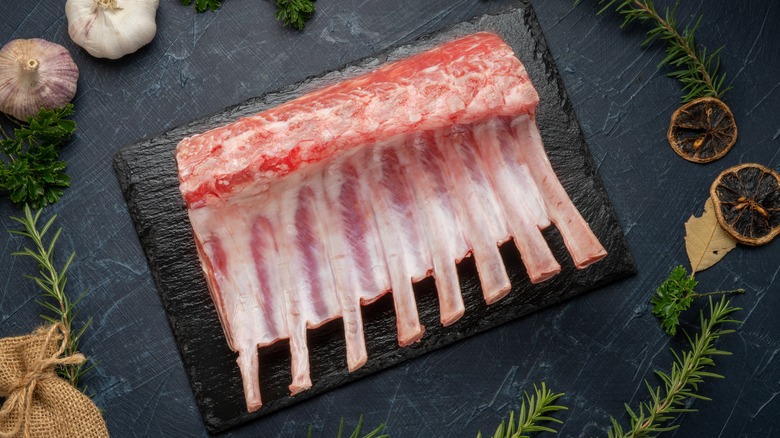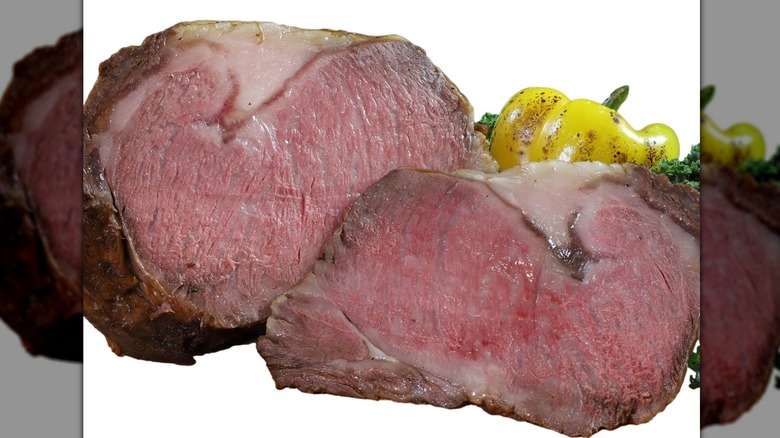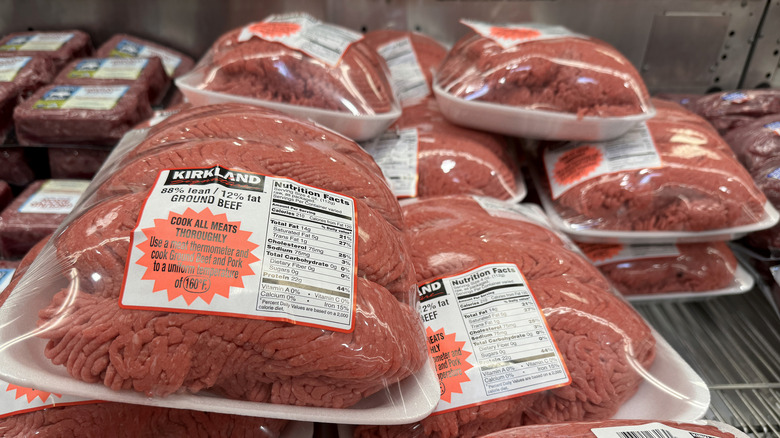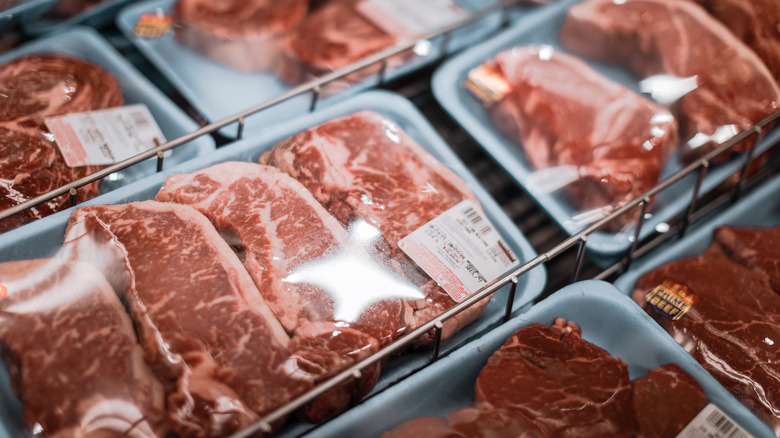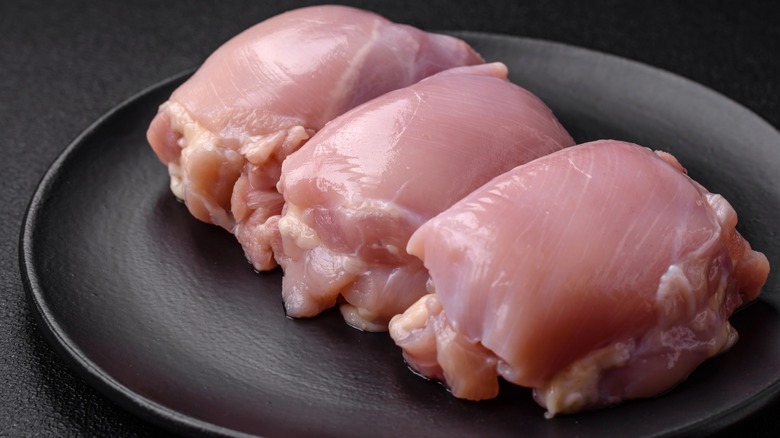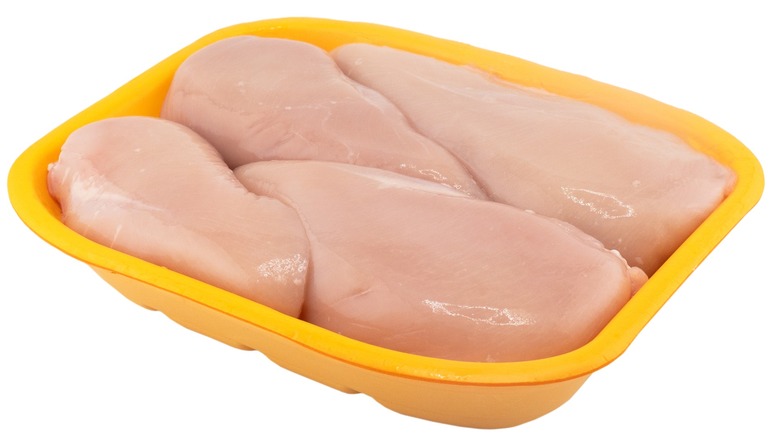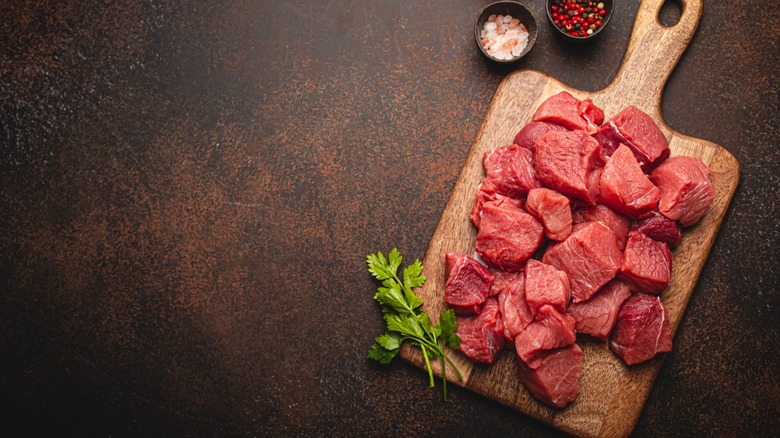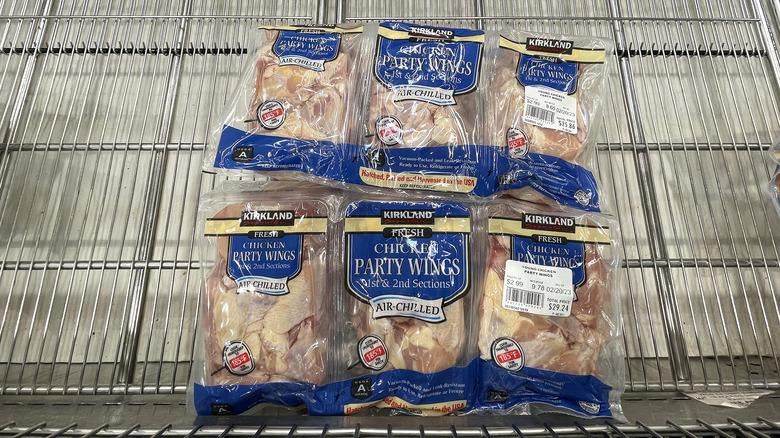9 Meats You Should And 5 You Shouldn't Buy From Costco And Why
As a professional chef, I take the quality of the meat I cook with seriously and have often relied on Costco to supply my kitchen. From its healthy selection of USDA prime beef to its vast meat department, this big box chain excels at providing the highest quality at the best value.
That said, there are some caveats. Not all of the meat at Costco is superior, and, occasionally, the prices aren't better than those at your local grocery store or butcher shop. What's more, if you do not have the freezer space for storage or know how to process larger cuts into smaller ones, it may not be the best place for you to obtain your meat.
For those who do have the freezer capacity, are serving a large crowd, and are willing to put in a little extra effort, the potential savings and excellence of the products in the Costco meat department are worth investigating. I am here to share my expertise with you to help you find those meats you should buy and those you shouldn't the next time you visit your neighborhood Costco.
Should: Brisket
Whether you plan to whip up a batch of corned beef and cabbage or are looking for something to throw into the crockpot, brisket is always a great cut to have on hand. Not only is Costco brisket a great value, but it is sold in its entirety, including both the point and the flat.
Generally, brisket is divided and sold by the half. While the two halves can be used interchangeably, they do have unique characteristics that make them more or less well-suited for specific recipes. The flat is the larger, more uniformly shaped, rectangular piece that is leaner and generally favored for dishes like corned beef or a classic stew. The point is the fattier, dense, irregularly-shaped half that typically features in sandwiches or gets smoked by barbecue enthusiasts.
The benefit of buying a whole brisket is that you get the best of both worlds. By cooking a whole brisket, you get the meatier flavor of the flat section and the juiciness from the fat in the point. The key is to purchase a slightly smaller brisket and to make sure you do not trim away any of that flavorful fat before cooking it. Alternately, divide the brisket and set the two halves aside for use in different dishes.
Should: Lamb Chops
Lamb chops are a specialty that people often shy away from because of cost and unfamiliarity with how to cook it. Costco's lamb chops tend to be a fraction of the cost of those you will find at a conventional grocery store, and, when properly prepared, they have a milder flavor and texture that will melt in your mouth.
The lamb sold at Costco is raised in Australia, which is well-known for its sheepherding industry. This lamb is grown using stringent animal welfare and husbandry practices and is pasture-raised. Unlike American lamb, Australian lamb tends to be processed when it is younger and smaller, giving it a delicate flavor and tender texture.
These loin chops are ideal because they are thick cut, which is preferable for obtaining a perfectly seared crust and a juicy, medium-rare center. And, because they are loin chops, they are rife with flavor. These chops are the lamb equivalent of a T-bone steak. They contain a portion of both the loin and tenderloin, making them the perfect choice for a special occasion meal, served with an elegant red wine reduction or a minty spin on a chimichurri sauce.
Should: Boneless Leg of Lamb
If you are hosting a crowd and looking for an elegant entrée, you cannot beat a perfectly roasted leg of lamb. Leg of lamb has its advantages over other cuts because its fattiness insulates it and helps keep the meat moist, making it easier to cook. That said, it can be expensive, and often only bone-in leg of lamb can be found at a conventional grocery store.
For this reason, the boneless leg of lamb from Costco is a steal. It is affordably priced and already deboned, saving the effort of doing so yourself and making carving infinitely simpler. Additionally, you won't be paying a premium price for the weight of the bones. Like the chops, this leg of lamb is sourced from Australia, making it a premium cut with great flavor.
This leg of lamb is sold already netted and ready to roast. The net acts to hold the leg together in a uniform shape, ensuring even cooking and a prettier slice when you carve it.
Should: Pork Loin
The simplicity of a roast pork loin is only matched by its versatility, making it a fantastic option for an everyday meal or a special occasion. The whole pork loins sold at Costco are not only affordable, but they frequently go on sale, providing even more of a discount for an already great value. These loins average about 10 pounds in weight, so they are hefty. They can be cut into smaller portions and frozen as roasts or cut into boneless chops that are fantastic on the grill.
Though the pork loin is a tender cut, it does lack significant intramuscular fat, which can cause it to dry out if not properly cooked. Typically there is a thin fat cap along the top of the pork loin. The amount of fat on these pork loins varies, so look for ones with a more distinctive layer along the top of the roast before purchasing it.
These cuts are ideal for butterflying (if you are contemplating making a festive stuffed pork loin recipe). This method not only allows for the meat to cook more evenly, but the filling serves as a vehicle for transferring moisture to the otherwise lean cut, helping to keep it juicy and flavorful.
Should: Beef tenderloin
Beef tenderloin is coveted for its marbling, which yields a luscious texture that is virtually unmatched. It is also the source of the elegant filet mignon, the steak that many turn to for a fancy meal. That said, it can be cost-prohibitive for those on a budget.
The solution for side-stepping this is to purchase a whole beef tenderloin from Costco. There are two options for this, peeled and unpeeled. Though the peeled is certainly easier to work with, you will save a lot of money by purchasing the unpeeled version. This will require some elbow grease to process, but the cost savings are well worth it. Additionally, these tend to go on sale fairly often, offering further savings.
Perhaps the biggest hurdle with purchasing a whole tenderloin is learning how to clean it and process it. This begins with eliminating excess fat, sinew, and a segment known as the chain, which isn't suitable for consumption, but can make for great stock. Next, the silver skin needs to be removed, which is relatively easy to do with a sharp knife. Once the remaining fat is trimmed, the tenderloin can be cooked whole or portioned into filets. Excess meat can be used for stews, soups, or ground into hamburger patties.
Should: Rib Roast
Another common holiday meal is a standing rib roast. Though bone-in rib roasts offer a lot of flavor, they are more challenging to cook evenly and a bit of a hassle to carve. The rib roasts at Costco are fantastic because they are large and boneless, making them a great cost-per-pound, and giving you the option of either cutting them into smaller portions or slicing them into thick cut steaks. These feature other characteristics that are desirable in a rib roast, such as a decent, yet not overly thick fat cap, guaranteeing the meat will remain moist and juicy when cooked.
Though it may seem excessive, I typically estimate one pound of meat per person when serving a rib roast. This is partly because the roast will shrink some during the cooking process, and there is quite a bit of fat that is not necessarily edible, but keeps the meat moist and juicy as it cooks. Though it is not necessary and is not sold this way, I recommend trussing the rib roast to help maintain a uniform shape and ensure even cooking.
Should: Rack of Lamb
Another cut of meat that screams elegance is a rack of lamb. As previously noted, Costco carries quality, imported, sustainably-raised, Australian lamb at a stupendous price. Though all of its lamb is a good value, a rack of lamb is a particularly good buy because it eliminates the need for what is generally a labor-intensive process: Frenching.
A rack of lamb typically comes with a layer of fat, meat, and membranes that connect the bones to one another. These can become chewy when cooked, so they are almost always removed. This process is time-consuming and requires a little know-how to execute. While you might expect this added butchering to tack on an additional surcharge that would make this meat more expensive, it surprisingly does not, making this one of the best buys you will find at Costco.
While you can cook the rack whole, It is often cut into chops resembling lollipops, which can be pan-seared and served with a delectable sauce. The only downside is that a single rack weighing two pounds can only serve two to three people, so this is definitely a special occasion cut of meat.
Maybe: Japanese Wagyu Beef
Costco has one delicacy available in some of its meat departments that may or may not be worth buying — Japanese Wagyu beef. Wagyu, which translates to "Japanese cattle," is a particular breed that is coveted for its high levels of intramuscular fat, or marbling. This meat is known to have an intense, savory flavor, succulent texture, and a richness that is unmatched by any other beef.
Costco Wagyu comes from the southern Kagoshima prefecture, a region well-known for its Kuroge Wagyu cattle or Tajima cattle. These black-colored cows are considered some of the best Japan has to offer, earning an A5 classification, the highest available from the Japanese Meat Grading Association.
This quality of beef comes with a hefty price tag, which may make it too much of a luxury item for many to consider. Additionally, Wagyu beef requires finesse to cook, because of its high fat content. That said, one thing that might take the sting out of the hefty price tag is the fact that the recommended serving size for Wagyu beef is just one ounce. This meat is so rich that any more would be almost unpalatable, so a little goes a long way.
Maybe: Ground Beef
Buying quality ground beef at an affordable price can be somewhat of a crapshoot. That said, if you have the freezer space and time to handle a lot of meat, and are not overly concerned about purchasing organic meat, Costco has one option that you should look into — the chub.
A chub is a tube of ground beef that is generally sold in 10-pound portions. It is made from ground beef combined with the fat and trimmings from steak butchered by the meat department. Chubs are usually not a part of the normal inventory carried at Costco, but you can request them in advance of your next grocery run.
Chubs have two distinct advantages over the generic ground beef that is usually available in the meat department. They are quite a bit cheaper and they have a leaner fat content, generally ranging between 5% and 8%. That said, chubs are subject to availability and the meat is not organic, which can be a deal breaker for those seeking a sustainable option. Additionally, the leaner meat-to-fat ratio may make this beef less suitable for certain recipes, such as a hearty ragù, meatballs, burgers, or meatloaf.
Shouldn't: Pre-cut Steaks
Purchasing pre-cut steaks is a convenient option, but you might want to think twice about doing so at Costco. First, the cost associated with obtaining pre-cut steaks makes them less of a value than you might think. They are often not cheaper than meat purchased elsewhere, and may even be more expensive.
More importantly, the pre-cut steaks at Costco are generally pre-tenderized, using a process known as blade or mechanical tenderization. This involves the meat getting pierced all over by needle-like projectiles. While this can yield a juicy steak, this process comes with a couple of significant concerns.
First, there is a risk of cross-contamination associated with this process. Since the machine used to tenderize the meat comes into contact with countless steaks, there is a high potential that pathogens can transfer from one steak to another, permeating the entire steak. This means it is not recommended that you consume a mechanically tenderized steak unless it is cooked to at least 145 degrees Fahrenheit, well above medium-rare doneness. And, since the steak has countless holes throughout it, juices can easily run out of the meat, leaving the steak dry and tough, if it is not handled with care.
Shouldn't: Chicken Thighs
Though the idea of boneless, skinless chicken thighs in bulk sounds convenient and like a great value, the ones available at Costco may not be as appealing as they might seem. These chicken thighs are air-chilled and packaged in vacuum-sealed, perforated, tear-off pouches that claim to be leak-resistant and ready to use. Unfortunately, the packages are often faulty, leaving an unexpected, slimy surprise in your vehicle or refrigerator.
Additionally, the perforated packages are difficult to separate. If you attempt to tear them, they often rip, creating a mess and compromising the adjacent package. The pouches require kitchen shears to be safely and cleanly pulled apart, making them somewhat less convenient than advertised.
Most of all, I dislike the amount of liquid contained within the packaging. Not only do I feel like I'm paying for water, not meat, but the volume of liquid surrounding the thighs requires extra effort to render this meat ready to cook and makes the air-chilling process completely useless. These thighs must be thoroughly dried before they can be cooked, otherwise, they retain a spongy texture and will not brown.
Shouldn't: Chicken Breasts
Costco chicken breasts have the same flaws as the thighs in terms of packaging, excess moisture, and leakage. However, there have also been reports of significant issues that have added to the skepticism I already had surrounding Costco chicken's quality.
Chicken breasts from Costco have reportedly been suffering from a phenomenon known as "spaghetti meat." This occurs when chickens grow too rapidly, causing their breast meat to become outsized, which compromises their texture. The meat takes on the appearance of strands that look spaghetti-like. While this may not impact the safety of the meat, it does produce an inferior mouthfeel, resulting in spongy, chewy chicken.
It also raises questions about the animal husbandry practices used by poultry farms that supply Costco. This is not the first time concerns of this nature have been raised. A 2021 investigation by the non-profit organization, Mercy for Animals, unveiled less than appetizing living conditions that led to a lawsuit against Costco. Though the case was dismissed, and Costco announced it would be reviewing the allegations, continued issues may cause you to pause before you pick up a bag of chicken breasts on your next shopping trip.
Shouldn't: Stew Meat
I have never been fond of purchasing pre-cut stew meat. While some stores will label precisely what cut is used for the stew meat, others will use scraps from a combination of different cuts and put them together to sell as stew meat. It is a great way of eliminating waste, but not the best quality. Additionally, I have concerns about the potential for cross-contamination when meat from different cuts is combined.
I prefer buying a whole cut of meat and processing it into smaller pieces for stew myself. This not only allows me to control what cut I use, but it also enables me to cut the meat into the exact sized chunks I want for stew, which are typically larger than what you might get from pre-cut stew meat. As a bonus, this is generally a cheaper option, as you are not paying for the labor involved with processing the meat.
The best cuts of meat to use for stew include those that are rife with connective tissue and fat. These have ample collagen that gets released as the meat is cooked low-and-slow, yielding tender, juicy stews. Brisket, chuck roast, eye of round, and short ribs are all ideal for this purpose and can be found at Costco.
Shouldn't: Chicken Wings
Not unlike Costco's chicken thighs and breasts, its party wings are rather disappointing. Though quite a bit more affordable than other grocery stores, the savings may not be worth the issues with quality. These wings come in similarly vacuum-sealed, leak-resistant, tear-off pouches that are frequently faulty and retain excessive amounts of liquid.
The one perk is that the drumettes and flats are already cut into sections, taking the work out of doing that yourself, which is not always the case. That said, the size of the pieces is inconsistent, making cooking the chicken evenly something of a challenge. Additionally, the wings often have residual pieces of feathers still attached to them, though, to be fair, this is something I have found with wings purchased elsewhere as well.
Lastly, these wings tend to be rather skimpy on the meat, with some pieces being all skin and bone. Overall, if you plan to make wings for your next tailgating event, you might want to look elsewhere to stock up.
